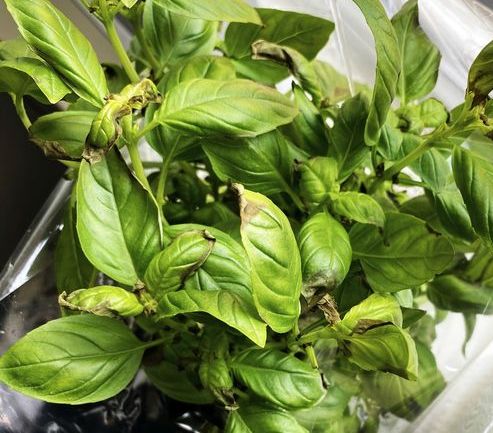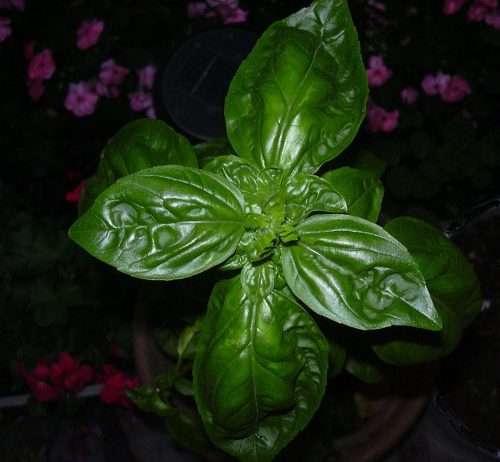Basil is a perennial but is usually grown as an annual. They are beautiful not-winter-hardy plants, whose fresh green leaves are used in cooking.
Also known as:
Great basil
You are viewing the mobile-adapted version of the page.
The one for tablets, laptop and desktop also provides general information, such as origin and cultivation.
Basil (Ocimum basilicum) is a perennial but is usually grown as an annual. They are beautiful not-winter-hardy plants, whose fresh green leaves are used in cooking. Basil is available year-round as a potted plant.
Sow basil in pots in a warm place from March to early July. After hatching in the summer, plant out in the garden or in pots for the windowsill, balcony or terrace. Plant in the garden at distances of 30 x 20 cm. Place them in a sunny spot. Keep the soil well moist during growth. Cut away flower buds. The lower leaves and young tops can be harvested from July to September.
Bugs
Deformed leaf: aphid (Aphidoidea).
Mucus trails and foraging: snails and slugs.
Fungi & diseases
White mold on the leaf: Downy mildew (Peronospora belbahrii).
The stems of young plants turn black, the plant dies. Especially with newly germinated plants: Fusarium wilt (Fusarium oxysporum).
Other
Hairlike fluff on germinating seed: chances are it is not a mold but the hair roots of the plant.

Brown spots on the leaves: this is especially common with pot-grown basil from the supermarket. The mostly still very young plants are fragile and still very sensitive to cold and (too) wet conditions. Moreover, they are too close together to grow properly. Plant the small plants in a larger pot or container. Place the pot in a dry and warm place, preferably not in full sun and be careful with watering. Also, make sure you have adequate nutrition.

